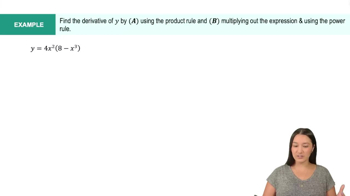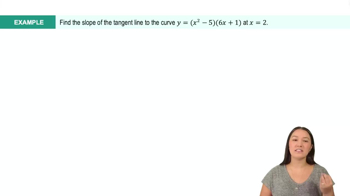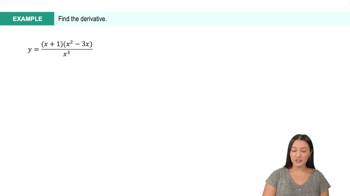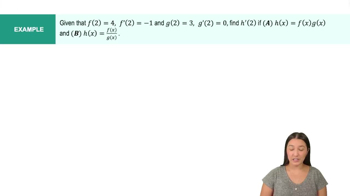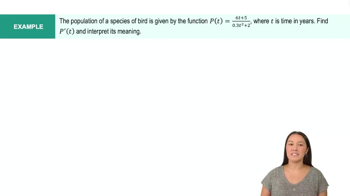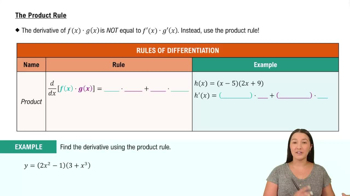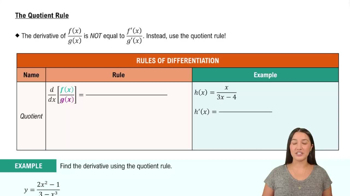Table of contents
- 0. Functions7h 52m
- Introduction to Functions16m
- Piecewise Functions10m
- Properties of Functions9m
- Common Functions1h 8m
- Transformations5m
- Combining Functions27m
- Exponent rules32m
- Exponential Functions28m
- Logarithmic Functions24m
- Properties of Logarithms34m
- Exponential & Logarithmic Equations35m
- Introduction to Trigonometric Functions38m
- Graphs of Trigonometric Functions44m
- Trigonometric Identities47m
- Inverse Trigonometric Functions48m
- 1. Limits and Continuity2h 2m
- 2. Intro to Derivatives1h 33m
- 3. Techniques of Differentiation3h 18m
- 4. Applications of Derivatives2h 38m
- 5. Graphical Applications of Derivatives6h 2m
- 6. Derivatives of Inverse, Exponential, & Logarithmic Functions2h 37m
- 7. Antiderivatives & Indefinite Integrals1h 26m
- 8. Definite Integrals3h 25m
3. Techniques of Differentiation
Product and Quotient Rules
Problem 96
Textbook Question
{Use of Tech} Beak length The length of the culmen (the upper ridge of a bird’s bill) of a t-week-old Indian spotted owlet is modeled by the function L(t)=11.94 / 1 + 4e^−1.65t, where L is measured in millimeters.
a. Find L′(1) and interpret the meaning of this value.
 Verified step by step guidance
Verified step by step guidance1
Identify the function L(t) = 11.94 / (1 + 4e^(-1.65t)) and recognize that you need to find the derivative L′(t) to determine the rate of change of the culmen length with respect to time.
Apply the quotient rule for differentiation, which states that if you have a function in the form of f(t) = g(t) / h(t), then f′(t) = (g′(t)h(t) - g(t)h′(t)) / (h(t))^2.
In this case, let g(t) = 11.94 and h(t) = 1 + 4e^(-1.65t). Calculate g′(t) and h′(t). Since g(t) is a constant, g′(t) = 0. For h(t), use the chain rule to find h′(t).
Substitute g(t), g′(t), h(t), and h′(t) into the quotient rule formula to find L′(t).
Evaluate L′(1) by substituting t = 1 into the derivative you found, and interpret the result in the context of the problem, which indicates the rate of change of the culmen length at t = 1 week.
Recommended similar problem, with video answer:
 Verified Solution
Verified SolutionThis video solution was recommended by our tutors as helpful for the problem above
Video duration:
3mPlay a video:
Was this helpful?
Related Videos
Related Practice



